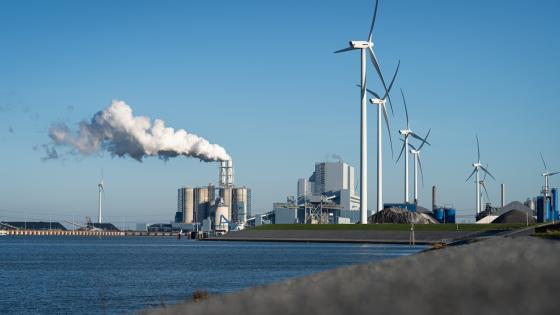Cash for Clunkers as stimulus
There has been significant debate about the role of various federal fiscal and monetary policies during recessions. Among the fiscal stimulus programmes, however, one seemed to hold particular promise. The Car Allowance Rebate System (CARS), better known as Cash for Clunkers, provided subsidies of up to $4,500 to households who scrapped their existing ‘clunker’ and purchased a new, fuel-efficient vehicle. Subsidies totalled nearly $3 billion.
The allure of the programme was twofold. First, it aimed to pull forward sales from the future, when the economy would likely be stronger, to the recessionary period of July and August of 2009. In doing so, it would provide an immediate stimulus to a struggling auto industry, and thus to the national economy. Second, the programme simultaneously offered to help wean American households from gas-guzzling vehicles that contribute to climate change, smog-forming pollutants, and US energy dependence.
Unfortunately, the evidence suggests that little went as planned. Existing research by Mian and Sufi (2012), Li et al. (2013), and Copeland and Kahn (2013) indicates that the programme only pulled forward sales from the following months, rather than future years as was predicted. Our study (Hoekstra et al. 2014) shows that the outcome was even worse. By inducing households to purchase vehicles that were more fuel-efficient but less expensive, Cash for Clunkers actually reduced total new vehicle spending over less than a year.
The timing of purchases
The main appeal of Cash for Clunkers as a stimulus programme is that it would directly increase spending in a durable goods manufacturing sector that is disproportionately affected by recessions. Nowhere was this more evident in 2009 than in the auto industry – according to the National Automobile Dealers Association, the annualised rate of new vehicle sales fell from around 16 million in 2007 and 2008 to around 10 million in 2009. The primary purpose of Cash for Clunkers was to provide stimulus to the industry, and therefore to the national economy, by shifting forward expenditures by households from the future – when the economy would likely be stronger – to July and August of 2009. The idea is straightforward – by shifting spending from post-recession peak periods to the current recessionary one, Cash for Clunkers could accelerate the economic recovery.
Critical to the effectiveness of Cash for Clunkers as stimulus is the question of when purchases would have been made in the absence of the programme. That is, from how far into the future were programme sales borrowed? After all, if purchases under the programme were going to be made in the very near future anyway, then the programme would do little to smooth durable goods sales; it would merely shift recessionary sales to recessionary sales.
Estimates at the time were optimistic about the programme’s ability to pull sales from the distant future. A September 2009 report by the Council of Economic Advisors predicted sales were pulled forward from the next five years; the National Highway Traffic Safety Administration projected a three-year pull-forward window.
Ex post analysis has shown that sales were pulled forward from the months immediately following the programme. Estimates of the pull-forward window vary from six to ten months, but all suggest that sales were shifted from the very near future.
We also find that the programme had very limited ability to borrow sales from the distant future. Our analysis uses Texas Department of Motor Vehicle records to compare the purchases made by households barely eligible for the programme – those with ‘clunkers’ rated at 18 MPG or less – to those whose clunkers were barely ineligible because they were rated at 19 MPG or higher and were thus unaffected by the policy. Consistent with the research discussed above, we find that the entire increase in sales during the programme would have happened anyway in the following eight months.
New vehicle spending
However, the programme was intended to do more than just pull sales forward; it also aimed to change the type of vehicles purchased by inducing households to buy more fuel-efficient vehicles. This turns out to have important implications for the effect of the programme on total new vehicle spending.
To see why, consider the relationship between vehicle fuel economy and price, shown in Figure 1. Because more fuel-efficient vehicles tend to be smaller and lower-performing, they also tend to be less expensive. For example, the most popular car purchased under the programme was the Toyota Corolla, which costs several thousand dollars less than crossovers and SUVs that were not eligible for the subsidy.
Figure 1. More fuel-efficient cars tend to be less expensive

In our study, we show that the combination of this relationship and the fuel efficiency restrictions imposed on new vehicles purchased under the programme meant the programme actually reduced overall new vehicle spending. We estimate that over the ten-month period during which the programme had no effect on the likelihood of purchase, barely eligible households who purchased under the programme spent an average of five thousand dollars less on new vehicles than did barely ineligible households. In short, while both groups of households were going to buy vehicles sometime during the next ten months, the difference is that barely eligible households were incentivised to purchase earlier and spend less.
Assuming similar effects outside of Texas, our estimates suggest that Cash for Clunkers actually reduced new vehicle spending by around $3 billion nationwide over a period of less than a year. In short, if the programme had not been put in place, we estimate revenues to the auto industry from July 2009 to April 2010 would have been several billion dollars higher.
Discussion and conclusion
Some may argue that the auto industry was under such financial distress with limited access to capital in summer 2009 that a multi-billion dollar hit to revenues over a ten-month period was ‘worth it’ if the industry could boost revenues for the short two-month period of the programme. We find that argument a tough sell given the expected (and realised) duration of the recession. Nevertheless, even if the short-term increase in revenues justified the reduction in revenues over the medium term, then our paper has an important policy message – the industry could have received an even larger boost to summer 2009 revenues if the fuel economy requirement had not been in place. Why? Because the households that had their vehicle purchases pulled forward to July–August 2009 would have been free to buy any car, rather than be restricted to buy fuel-efficient cars that tended to be less expensive.
One could also argue that the environmental benefits of the fuel efficiency restrictions justified the decline in new vehicle spending over this time period. Unfortunately, the consensus of the literature suggests that the programme was a costly way of reducing environmental harm. For example, Knittel (2009) estimates that the most optimistic implied cost of carbon reduced by the programme is $237 per ton, while Li et al. (2013) estimate the cost per ton between $92 and $288. These estimates are much larger than the estimated social cost of carbon of $33 per ton (Interagency Working Group 2013).
As a result, our view is that while it is perhaps possible to justify a generic subsidy programme that pulls forward purchases of new vehicles by up to eight months, it seems difficult to justify the inclusion of an environmental component in that programme. The conclusion from our study is that in the case of CARS, the environmental component both failed to meet its environmental objectives in a cost-effective way, and caused a stimulus programme to reduce spending on the targeted industry over a period of less than a year.
This Cash for Clunkers experience has implications for policymaking. While hindsight is always 20/20, it certainly appears that the primary policy goal – stimulating revenues to the auto industry – was undermined by the ‘add-on’ energy and environmental objective of the policy. Dual policy goals, even if individually worthy, can undermine each other when combined in a single policy.
References
Copeland, Adam and James Kahn (2013), “The production impact of ‘Cash for Clunkers’: Implications for stabilization policy”, Economic Inquiry, 51(1): 288–303.
Council of Economic Advisers (2009), “Economic analysis of the Car Allowance Rebate System (‘Cash for Clunkers’)”, Technical report, Executive Office of the President, 10 September.
Hoekstra, Mark, Steven L Puller, and Jeremy West (2014), “Cash for Corollas: When Stimulus Reduces Spending”, NBER Working Paper 20349, July.
Interagency Working Group (2013), “Technical Support Document: Technical Update of the Social Cost of Carbon for Regulatory Impact Analysis Under Executive Order 12866”, Technical report, Interagency Working Group on the Social Cost of Carbon, May.
Knittel, Christopher R (2009), “The implied cost of carbon dioxide under the Cash for Clunkers program”, Center for the Study of Energy Markets Working Paper 189, August.
Mian, Atif and Amir Sufi (2012), “The effects of fiscal stimulus: Evidence from the 2009 ‘Cash for Clunkers’ program”, Quarterly Journal of Economics, 127(3): 1107–1142.
National Highway Traffic Safety Administration (2009), “Consumer Assistance to Recycle and Save Act of 2009”, Report to Congress, US Department of Transportation, December.






